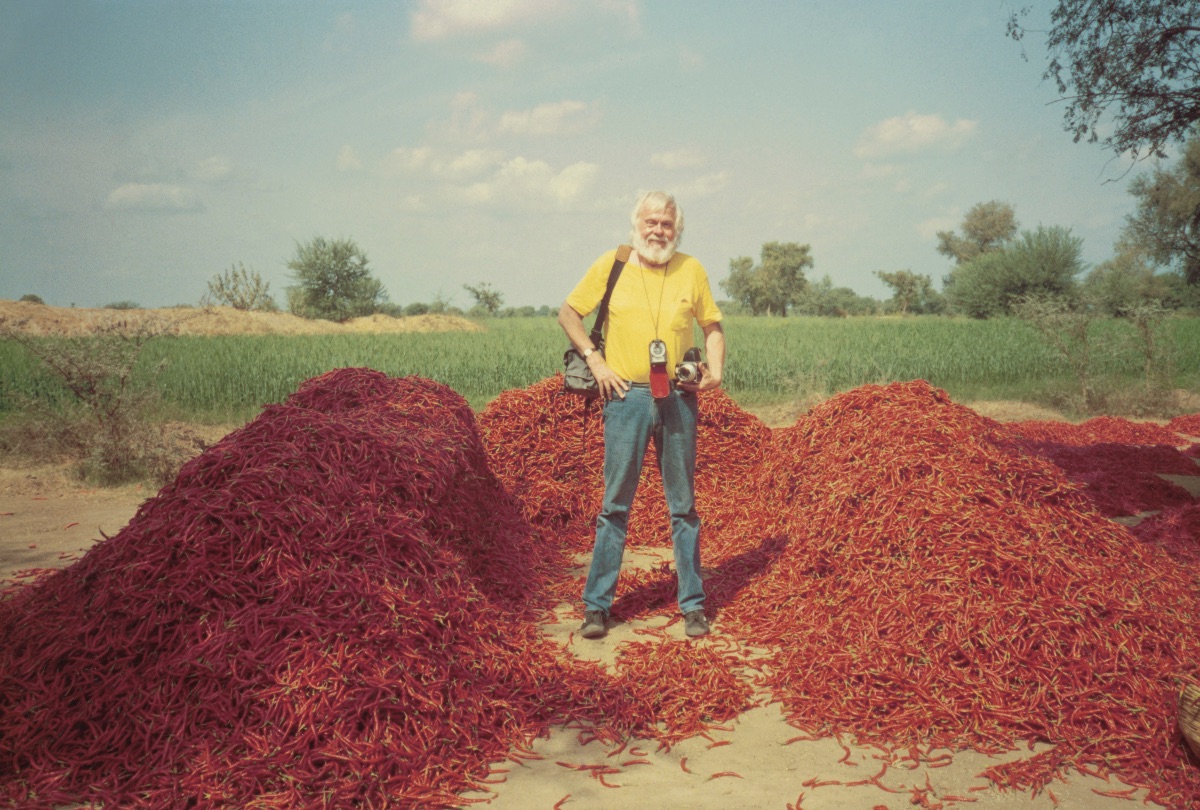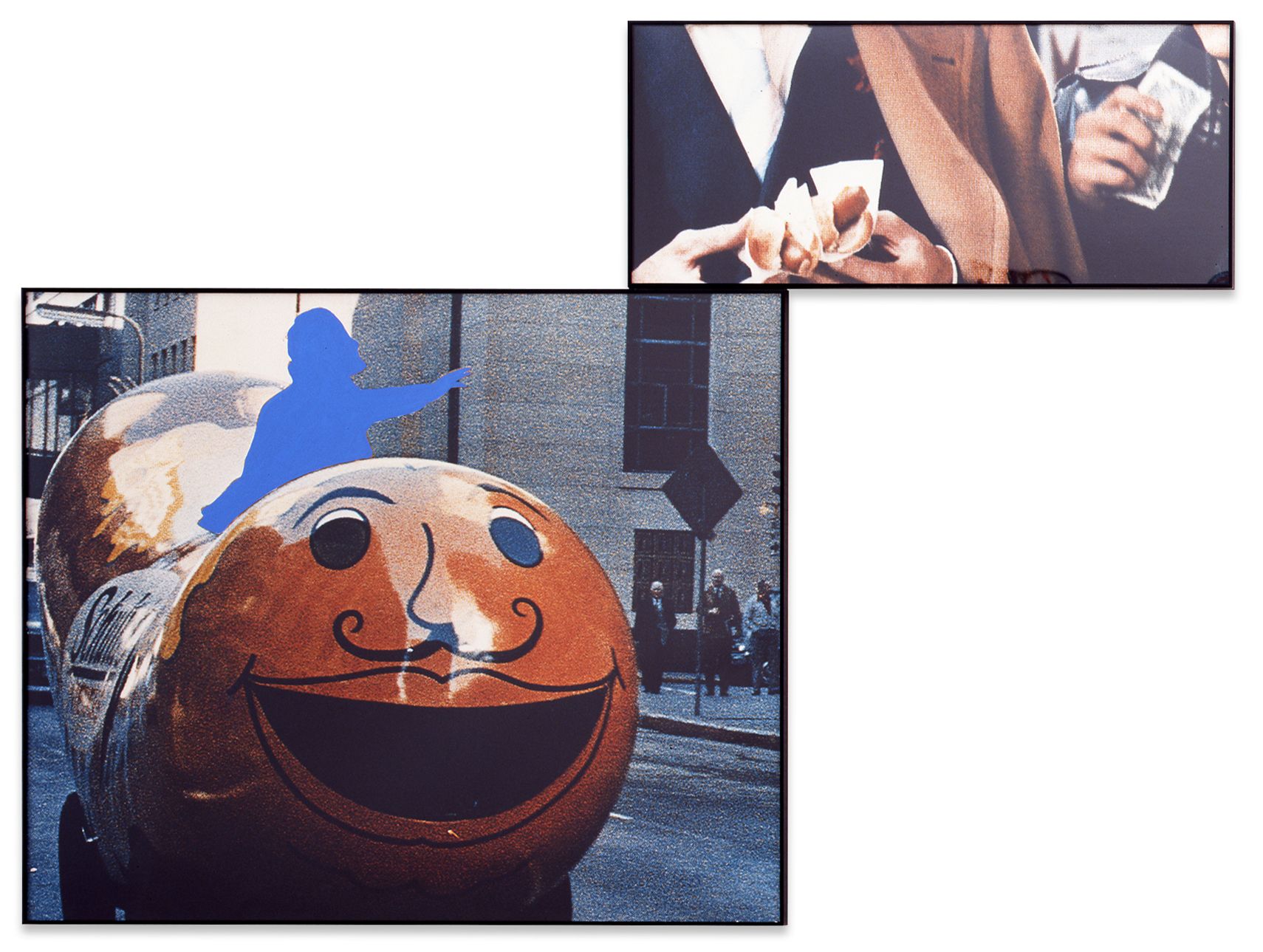PREVIEW: John Baldessari-Ahmedabad 1992
 John Baldessari, a pioneer of American Conceptualism, continually challenged clichés and explored the expectations that shape how we perceive works of art. Throughout his storied and influential career, his distinctive approach to painting, photography, source images and texts recontextualized art-historical narratives and rejected traditional boundaries. Drawing from a variety of sources (advertising, film culture, Marcel Duchamp, and Ludwig Wittgenstein) he created absurdist, complex yet accessible juxtapositions
John Baldessari, a pioneer of American Conceptualism, continually challenged clichés and explored the expectations that shape how we perceive works of art. Throughout his storied and influential career, his distinctive approach to painting, photography, source images and texts recontextualized art-historical narratives and rejected traditional boundaries. Drawing from a variety of sources (advertising, film culture, Marcel Duchamp, and Ludwig Wittgenstein) he created absurdist, complex yet accessible juxtapositions
By Efi Michalarou
Photo: Sprüth Magers Gallery Archive
In the exhibition “Ahmedabad 1992” is on show a series of mixed media assemblages John Baldessari produced during his residency in India. For the first time in decades, a selection from this unique period in the artist’s oeuvre will be on view at the London gallery. In the early weeks of 1992, Baldessari was invited to live and work in the expansive compound of the Sarabhai family, Indian industrialists and patrons of the arts, in the Shahibaug district of Ahmedabad. Members of the prominent family formally set up the residency in the 1970s, but the Sarabhais were interacting with artists, designers and architects long beforehand. Like many patrons and cultural protagonists of post-independence India, they actively engaged with foreign artists and established international networks, hoping to restrain revivalist currents and promote a new vision for the country. Following several other established artists, among them his close friend Lynda Benglis, Baldessari resided in the Villa Sarabhai, a red brick and concrete open-plan house designed by Le Corbusier in the 1950s. The rarely seen multi-panelled works that stem from Baldessari’s stay are a direct response to his new surroundings, which were inspiring and overwhelming in equal measure and had a lasting impact on the artist’s oeuvre. The collages are composed of his own photographs, some enhanced by paint; an eclectic mix of found imagery; rubber mudflaps painted by local sign painters; Formica pieces modelled after parts of local motorized rickshaws; and printed handmade paper collected from the Gandhi ashram in Ahmedabad. Immersing himself in Indian culture, the Californian photographed the bustling city at a time when India was subject to radical changes due to the emergence of new technologies, globalization processes, and an influx of Westerners. The cleverly devised arrangements of the exhibition document this shift. Here, floating electronics in a futuristic cyberspace point towards the burgeoning technological revolution of the ’90s. There, a sense of motion and transition is reflected in the dominant motifs, including modes of transportation (motorbikes, bicycles, trucks), animals in movement (a cow trotting along the roadside or a bird in flight), and cricket being played or kites being flown. Also at constant play in the series is the alternating and interlacing of looking and being looked at, with several images either observing the action of street scenes or featuring a subject’s direct gaze, and sometimes both. Cornerstone aspects of Baldessari’s practice, like the mining of pre-existing imagery, fell on fertile ground in a place as visually spectacular as India. Images from magazines and the everyday are deconstructed and reassembled to stress their original ambiguity or curiousness. Figures are painted over, withdrawing the underlying information and complicating the reading of the image. Expanding on this sort of erasure, Baldessari produced the “Removal Series” (1995) shortly thereafter. Also employed in the present works is the use of dots to cover faces, a predominant feature of the artist’s work from the mid-1980s onward, which simultaneously draws the eye to the point of obfuscation and redirects the viewer towards other parts of the image. The resulting works, which Baldessari produced after his return to Santa Monica, expand beyond the sum of their parts and evoke the atmosphere and complexity of Indian scenery through associative juxtaposition. The artist’s signature wry humor gives way to a surprisingly raw view of everyday settings. Entered into new contexts, they are recoded and refuse immediate answers, allowing viewers to generate their own responses. The residency provided him with a unique opportunity to not only observe a new environment, which in many ways contrasted his Los Angeles milieu, but also permitted him to turn a critical lens inward for a period of self-reflection. It is the works’ contingent quality—with each element modifying the next—Baldessari’s vibrant use of color, and the keen eye of an outsider that render the “Ahmedabad” series an intimate commentary on what it means to look during a moment of reinvention.
Photo: John Baldessari in Ahmedabad, 1992, © John Baldessari 1992. Courtesy Estate of John Baldessari © 2024, Courtesy John Baldessari Family Foundation
Info: Sprüth Magers Gallery, 7A Grafton Street London, United Kingdom, Duration: 31/5-27/7/2024, Days & Hours: Tue-Sat 10:00-18:00, www.spruethmagers.com


